A mud tire is a special tire designed to drive through thick, sticky mud and provide good traction for off-road vehicles. The rubber associated with tires play a vital role in achieving the best off-roading experience. There are many categories of off-road tires, including all-terrain and mud-terrains. Let us discuss: what is a mud tire?
A mud tire is a large, thick tire designed to resist the friction of deep mud. They have large tread blocks and reinforced sidewalls having a rugged protruding design. Mud tires have more aggressive tread configurations with wide lug spacing. It helps to clear out debris effectively.
Mud tires are designed specifically for off-road conditions .The large tread blocks and sidewalls help the tires easily go through rocks and loose grounds like mud or sand. Having said that, this feature causes hydroplaning in mud tires. Let’s find the details below.
Types of Mud Tires:
| Heavy-Duty Mud Tires | Mud Tires for Street |
|---|---|
| Mud tires also known as mud-terrain tires are specifically build for off-road terrain. | These are the hardcore mud tires which can get traction in mushy surfaces too. |
| These tires are specifically designed for a standard truck and SUV tires. They hold excellent off-road performance ability and can be used on street. | These tires are specifically designed for rough surfaces while some brands have all-terrain performance capabilities. |
| These tires have an aggressive tread pattern having large tread blocks for gripping the surface which other tires cannot do so. | These tires can be used on and off the road surfaces. |
| The significant tread depth on these tires create some powerful biting edges and include embedded mud and stone ejectors. | If you are planning to drive on pavement then the street based mud terrain tires are best to use on highway. |
| These tires are designed for rock crawling and other tough conditions too. |
Key Features of Mud Tires:
Tread pattern:
Mud tires hold an aggressive tread pattern providing a superior grip having large and deep voids between the tread blocks. The thickness of tread ranges from six-ply up to eight and ten-ply.
The deep ply patterns of these tires eject more mud and stones and affect traction. The deep tread pattern also prevents punctures due to rocks and debris.
Sidewalls:
It is recommended to look for a tire product having the thickest sidewalls. It is done to protect the tire’s interior for better and longer-term durability. Look for a rubber sidewall having three-ply or higher, which can drive through mud and over rocks too.
Shoulder Tread:
Look for a product with a tread pattern that wraps around the tires in a shoulder fashion. Such a thing enables a wide footprint and provides a better grip even in tighter situations. Various brands of mud tires have an elevated tread style on their shoulders for control and power.
Clearance:
It is also recommended to determine enough clearance between the tire and fender of the vehicle. Vehicles made for off-roading have enough space that larger tires can accommodate, but if you own an off-road-focused truck, you might not have enough clearance.
Some Other Considerations:
1. Size:
Wider tires are better as they fit well on the existing wheels. Wide tires provide more contact with the ground. Always check the accommodation of width for your tire as you cannot use a tire having 10-inch width if it can accommodate a 7.5-inch tire.
How to Read Mud Tire Sizes? The Complete Guide
2. Terrain:
Select the tire according to the surface and ground. Look for the terrain before purchasing the popular mud tires as if you are planning to drive on dusty trails; then heavy-duty mud tires are unnecessary.
Benefits of Mud Tires:
- Mud tires are beneficial for off-roading as they can perform well over fields, dirt roads, muddy and rocky terrains, and other surfaces. Go for the perfect mud tires to gain the best experience in off-roading; otherwise, you might get stuck at a place.
- Mud tires are durable and are designed with special tread patterns. They hold specific compounds as their reinforced sidewalls. Mud tires are strong and can be navigated easily.
- Mud tires are safe to use and provide a sense of confidence to riders so that they can safely traverse through rough and muddy roads along with terrains without the fear of damage to the vehicle. These tires also increase the performance in snowy conditions.
| Pros of Mud Tires | Cons of Mud Tires |
|---|---|
| Mud tires hold an aggressive look | Mud tires produce loud and roar noise on road |
| Mud tires are great for rough and rocky terrains | Mud tires does not perform well in wet conditions |
| Mud tires also perform in an excellent way on loose ground | Mud tires ride rough on various surfaces |
Are Mud Tires Safe in Rain?
Whenever we talk about mud tires and their usage, the question is also discussed whether the mud tires are safe to use in rain and slippery surfaces or not? The mud tires are more prone to aquaplaning or hydroplaning, making them less safe to use in the rain.
Aquaplaning might be a new term for you, but its meaning is very simple. Aquaplaning is seen when the tire, most probably the mud tire, fails to clear the water between the tire’s tread blocks.
If water is not cleared on time, it creates a tire sitting on top of the water and makes little to no contact with the road under the tire. The vehicle is more prone to slide around completely and is not under the driver’s control in such conditions. The faster the vehicle’s speed, the more are the chances of hydro or aquaplaning.
Tread depth is also another reason for aquaplaning in mud tires. Tread depth is reduced when the tires become worn out with excessive usage, leading to lower space for storing away the excess water from tires.
Find details here: Can You Hydroplane with Mud Tires?
Siping the Mud Tires:
Siping is the process of cutting tiny slits into tires, which can help the vehicle perform well on ice, snow, or mud. Simple usually leaves an unnoticeable effect on traction, increasing the braking distance on wet and dry pavement. Majorly the tires are often equipped with the feature of siping, including mud tires that help them perform better in rain, snow, and mud.
Tips for Maintaining Mud Tires:
- It is suggested to keep an eye on the maintenance of your vehicle drives and handles as mud tires can change their way too. Large mud tires can affect the gear ratio, which gives inaccurate speed or distance readings.
- Mud tires are a bit noisy on the pavement. Because of their construction and design, such tires are even much louder on an average road tire.
- It is recommended to increase the tire’s height if you want large mud tires, Tires having large circumferences sometimes do not fit properly.
- Switch the wheels, too, if you want to upgrade the mud tires. Although better for controlling steering, larger wheels might decrease the size of the sidewall.
Features | Mud-Terrain Tires | All-Terrain Tires |
Road noise | Worse | Better |
Rolling resistance | Worse | Better |
Fuel consumption | Worse | Better |
Longivity | 30K miles | 40K miles |
Concrete road terrain type | Good | Good |
Performance on mud terrain | Good | Bad |
Performance on rocky terrain | Good | Okay |
Performance on snow | Good | Bad |
Technologies Associated with Mud Tires:
1. Significant Tread Blocks with Aggressive Tread Pattern:
The tread design is fundamental to mud tires, such as an aggressive tread pattern and mega tread blocks. The aggressive treads of mud tires claw through the off-road terrain. It also effectively develops a grip where less-focused tires cannot hold. Mud tires have significant tread depth and help form the powerful biting edges of tread blocks.
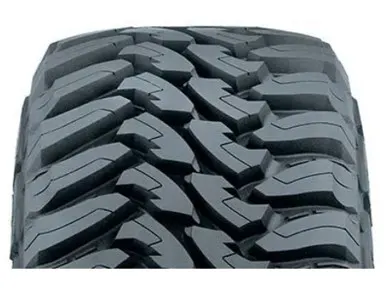
2. Mud and Stone Ejectors:
Mud tires offer a feature technology for clearing debris out of the tread. Such feature helps maintain the functional biting edges and guards against the tread, which are filled with off-road gunk. The ejectors are embedded in the tread voids, which ejects the debris.
3. Sidewall Lugs and Tread:
The upper sidewall of the mud tires provides additional traction, and sidewall lugs contribute to biting edges for grabbing on the terrain. This extension of the tread pattern is a unique characteristic of a mud tire.
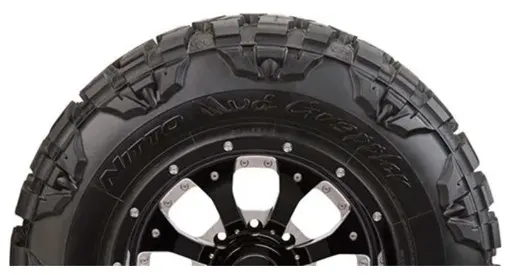
4. Puncture Resistance:
The surface layer of mud tires is engineered with durable compounds. The puncture resistance technology maximizes and guards against off-roading hazards. The tread compounds, which are targeted and highly engineered, are used across tire types and optimize tire performance.
5. Multiple Ply Layer Construction:
Mud tires have 3-ply sidewall construction, which is perfect for puncture protection. These tires also have a strong sidewall which allows the airing down and low psi in off-roading conditions.
Limitations of Mud Terrain Tires:
- With many features and specialties still, mud-terrain tires are not perfect.
- These tires are known to consume more fuel and offer less traction in rain and snow than other all-terrains.
- These tires are also typically more expensive than other off-road tires.
- Mud tires are noisy on paved roads and wear faster than usual.
- Mud terrain tires perform well in harsh environments but are a serious bit of kit for off-road enthusiasts.
Overall Best Mud Tire:
When we talk about the overall performance of mud tires, the best mud tire is always Nitto Trail Grappler M/T. This tire holds specific features which make it the best among other mud tires.
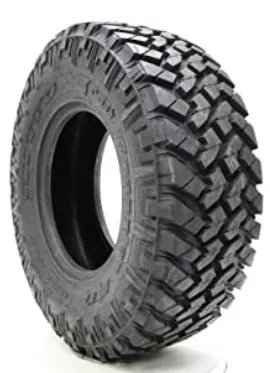
Specific Features:
- This mud tire holds the feature of a 3-D tapered groove tread with additional biting edges. These features help in the off-roading exploring experience.
- The deep center sipes on these mud tires increase traction on wet surfaces and help in preventing hydroplaning.
- These mud tires have reinforced shoulder grooves which give them better performance without compromising their stiffness.
- These tires had stone ejectors, protecting the tread and rejecting stone and clear mud.
Mud Tire With the Best Value:
We cannot ignore the features of BF Goodrich Mud-terrain T/A KM2, and these tires are considered the best ones that have the best value.
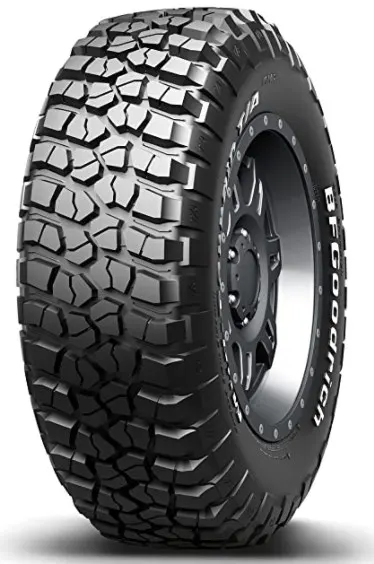
Specific features
- These mud tires have aggressive sidewall lugs.
- BF Goodrich Mud-terrain tires have a self-cleaning tread design with a special element of edge scoops and shoulder scallops.
- These tires have dual-compound tread and perform well on various surfaces.
Best Mud Tire with an Honorable Mention:
We cannot forget to mention the Falken Widpeak AT3W due to its specific features.
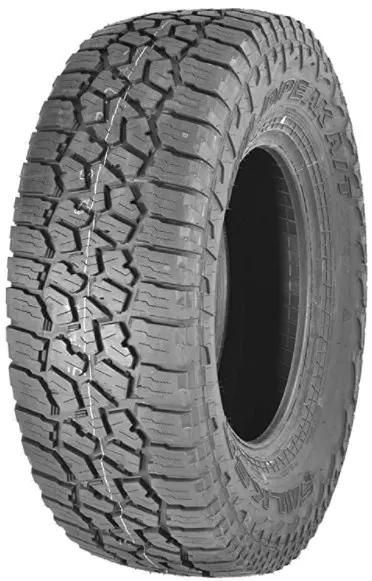
Specific Features:
- These tires are all-terrain and are capable of withstanding any weather.
- There is heat diffuser technology associated with these tires in their lower sidewall, which helps dissipate the heat and protects the tire’s internal components.
- These tires have 3D Canyon sipe technology, which interlocks the shoulders and resists the wear, providing additional handling stability.
- Rigid and rugged tread blocks provide tread-pattern and enhance vehicle stability.
Mud Tire | Features | Pros | Cons |
Nitto Trail Grappler M/T |
|
|
|
BF Goodrich Mud-Terrain T/A KM2 |
|
|
|
Falken Wildpeak AT3W |
|
|
|
Top 4 Mud-Terrain tires:
1. Pro Comp Extreme MT2:
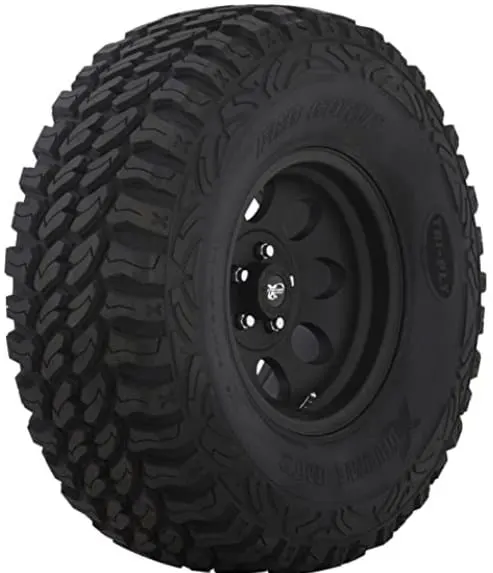
Specific features
- Pro Comp is considered one of the biggest names of off-roading and mud-terrain wheels. Pro Comp has one of the best tire lineups featuring Xtreme MT2.
- This is not only a mud-focused design-based tire but is an all-around and all-terrain tire.
- These tires are a solid choice for a driver who performs some double-duty-off-roading.
- These mud tires have a 40,000-mile treadwear warranty and are excellent to use at rock crawling.
- These mud tires perform better in slick stuff too.
| Pros | Cons |
|---|---|
| These tires are solid all-around tire | These tires are not pure mud-terrain tires |
| These tires have an impressive 40K warranty | |
| These mud tires can excel on roads |
2. Interco TrXus M/T:
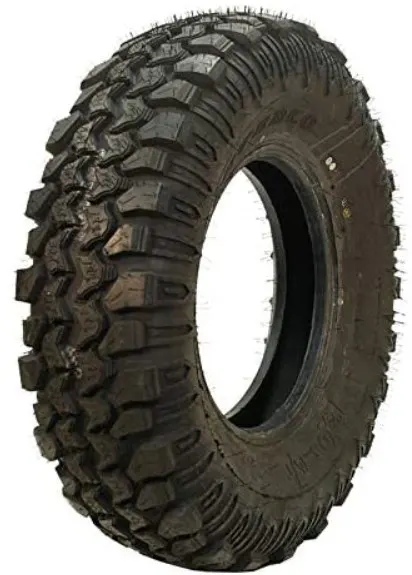
Specific features
- Super Swamper tires are considered one of the best mud tires globally and offer one of the best products in the form of TrXus M/T Radials.
- It combines a smooth and quiet ride with tough and thick sidewalls and provides the feature of chip resistance.
- Aggressive siping is associated with these tires, providing excellent all-surface traction in snow and mud.
- These tires also enable exceptional rock-climbing performance.
- These tires also ensure heavy-duty durability and are tough and more effective than other tires.
- These mud tires are highly rated and are a popular and proven brand in terms of tires.
| Pros | Cons |
|---|---|
| These tires offer leading performance | These tires are a bit expensive as compared to other tires and brands |
| These mud tires are very tough and long-lasting | These tires may degrade on-road comfort |
| These tires have a proven brand reputation |
3. Mickey Thompson Baja Claw TTC:
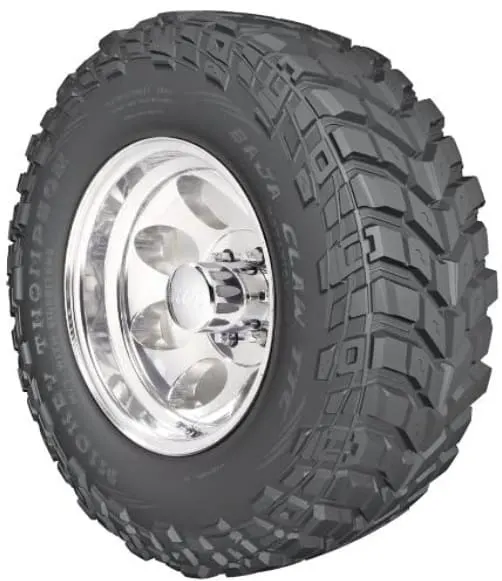
Specific features
- Mickey Thompson is one of the most popular off-road tires on the market, and their product named Baja Claw TTC tire is a premium offering designed to offer a competition-ready performance in mud.
- The self-cleaning performance of these tires helps keep consistent contact with the surface.
- These tires also have shoulder-mounted treads, which allow high flexibility and compatibility even at steering angles.
- These tires have powerful sidewalls which offer durability and puncture resistance.
- The T6 rubber compound enhances traction on wet and icy surfaces.
| Pros | Cons |
|---|---|
| These mud tires have top-line durability | These mud tires are loud on road |
| These tires are extremely flexible even in extreme conditions | These tires consume more fuel as compared to other tires and brands. |
4. Milestar Patagonia M/T Mud Terrain:
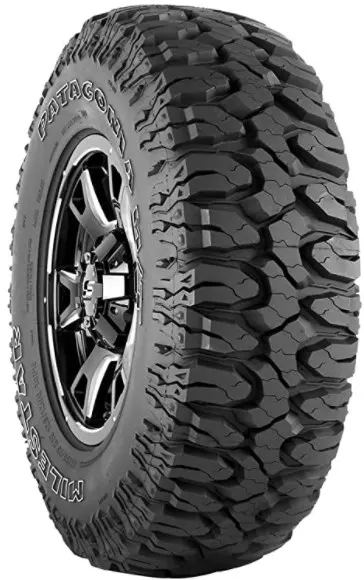
Specific features
- Milestar Patagonia M/T mud terrain tires are well-reviewed off-road tires in the market.
- They are designed to offer strong performance in mud, snow, and even rocks.
- These tires offer a high-void design that provides numerous aggressive biting edges and promotes self-cleaning and ejection from mud and snow.
- The tread blocks of these tires help it to perform well on-road as well as on off-road conditions too.
| Pros | Cons |
|---|---|
| These mud tires are highly affordable | These mud tires can wear faster than usual |
| These mud tires are relatively quiet on pavement |
Check our detailed guide: Top 10 Best Off-Road Mud Tires: Guide to Select The Best
Noise in Mud Tire:
Mud tires can be noisy – the tread design generates noise due to the interaction of the lugs with loose particles. The type of tire casing construction, especially bias-belted or radial, may also contribute by generating sound due to additional frequencies.
The lug shape and pitch can also be a factor since these factors determine how tightly loose particles are packed in the footprint of each lug. A tight pack means a quiet tire. If the lug spacing is too wide, it becomes more likely that particles will fall between the lugs and become loose, thus making noise.
Tire casing construction can play a role in mud tire noise, especially bias-belted or radial tires – only if the tread design allows this.
We have made a detailed analysis here: Why are Mud Tires Loud? All You Need to Know
Shakings in Mud Tire:
Mud tires can shake the vehicle because they are trying to gain traction. When they are in the mud, or their tires have no grip, they will shake the vehicle. Mud tires are usually lifted or larger than conventional tire sizes to accommodate bigger masses of soil and water.
A vehicle’s tires are made of rubber and metal. The first side of the tire is usually made with steel cables wrapped around a rubber tube, which has air inside it to help with traction.
The rubber tire has grooves in the tread so that the rollers can have more traction on mud or wet surfaces. When these grooves are full of mud or ice, the tire has less traction. This is why the rubber shakes the vehicle; it’s trying to get more traction so that your car doesn’t slide on these surfaces.
Do Mud Tires Cause Vibration? All You Need to Know
Mud Tires and Fuel Consumption:
Mud Tires result in higher fuel consumption because they increase rolling resistance. In a truck with 4WD that is already getting 10 miles per gallon, increasing the rolling resistance will take a big bite out of your fuel economy.
The increased pressure on a tire’s rubber from a mud surface increases friction and reduces grip and efficiency.
Mud Tires also have the added weight penalty to consider. All those grooves and lugs on a mud tire will add weight.
I have written a detailed article here: Do Mud Tires Affect Gas Mileage?
Also Read:
Can You Put Mud Tires on a 2WD Truck?
How are Mud Tires in Snow? All You Need to Know
Frequently Asked Questions (FAQs):
What are the good features of mud tires?
Mud tires are good for mud, sand, loose soil, and jagged rocks. They are best for snowy, icy, and wet conditions. These tires can also run much better on-road because of their design, although there is little raw off-road traction.
What is the major difference between all-terrain and mud tires?
All-terrain tires are structured in a flexible way to endure most conditions. On the other hand, Mud tires are designed specifically for off-road conditions. They have large tread blocks, which enables them to get through the rocks and loose ground, including mud and sand.
How long can mud tires last on the road?
Mud tires can last to 40,000 miles and get through most surfaces like mud, dirt, snow, and other surfaces. Mud tires wear down quickly while driving on pavement.
Are mud tires considered good for daily driving?
Mud tires are not meant for daily usage on roads. These tires can be legally used on roads as there are no specific rules that are not ideal.
Are mud tires worth investing in?
Mud tires are a better choice as compared to all-terrain tires. Mud tires are a personal preference as they provide better off-road traction in extremely deep mud and sand-filled terrains.
Do mud tires affect the gas mileage?
Mud terrain tires are made for off-road enthusiasts. They have an aggressive tread which can increase the rolling resistance so that more tires can be put on the ground. But eventually, this thing can hurt gas mileage.
How much does an average mud tire cost?
An average mud tire can cost between $125-$300, depending on the brand and features.
Are the mud tires loud enough?
Mud tires are fairly loud as compared to all-terrain tires. These tires provide an unrivaled grip on the off-road surfaces, due to which they produce loud noise on the highway.
Are the mud tires considered bad to use in the rain?
Mud terrain tires are not ideal for rain, but they are also not the worst choice. These tires are more prone to aquaplane, so that they can be dangerous in the rain.
Are mud tires considered soft tires?
Mud terrain tires can wear faster than all-terrain tires due to their soft rubber compounds. These tires provide a better grip on almost all surfaces and wear much faster than all standard all-terrain tires.
Why are mud tires considered bad to be used in the snow?
Mud tires are less capable of being used in snow than other all-terrain tires. These tires have wide channels between tread blocks filled with snow and ice. These mud tires lack siping, so they have nothing to grab at the road surface.

This is Surya. I am an experienced off-roader. I have been off-roading for many years across several terrains. I am passionate about 4×4 driving and want to share my knowledge and experience with others.
My goal is to provide you with the most comprehensive and unbiased information about off-roading.
I curated this article through my personal experience and expertise, and I hope it helps you with what you are looking for.

 (+91)9123743026
(+91)9123743026
 24/1 Nibedita Sarani. M.B. Road, Kolkata- 700051, India
24/1 Nibedita Sarani. M.B. Road, Kolkata- 700051, India
Why are Mud Tires Loud? All You Need to Know – Off-Road Handbook
Saturday 19th of February 2022
[…] simple answer to this question is, “YES.” Mud tires make noise and are loud compared to tires of regular terrain tires. The primary reason lies within […]